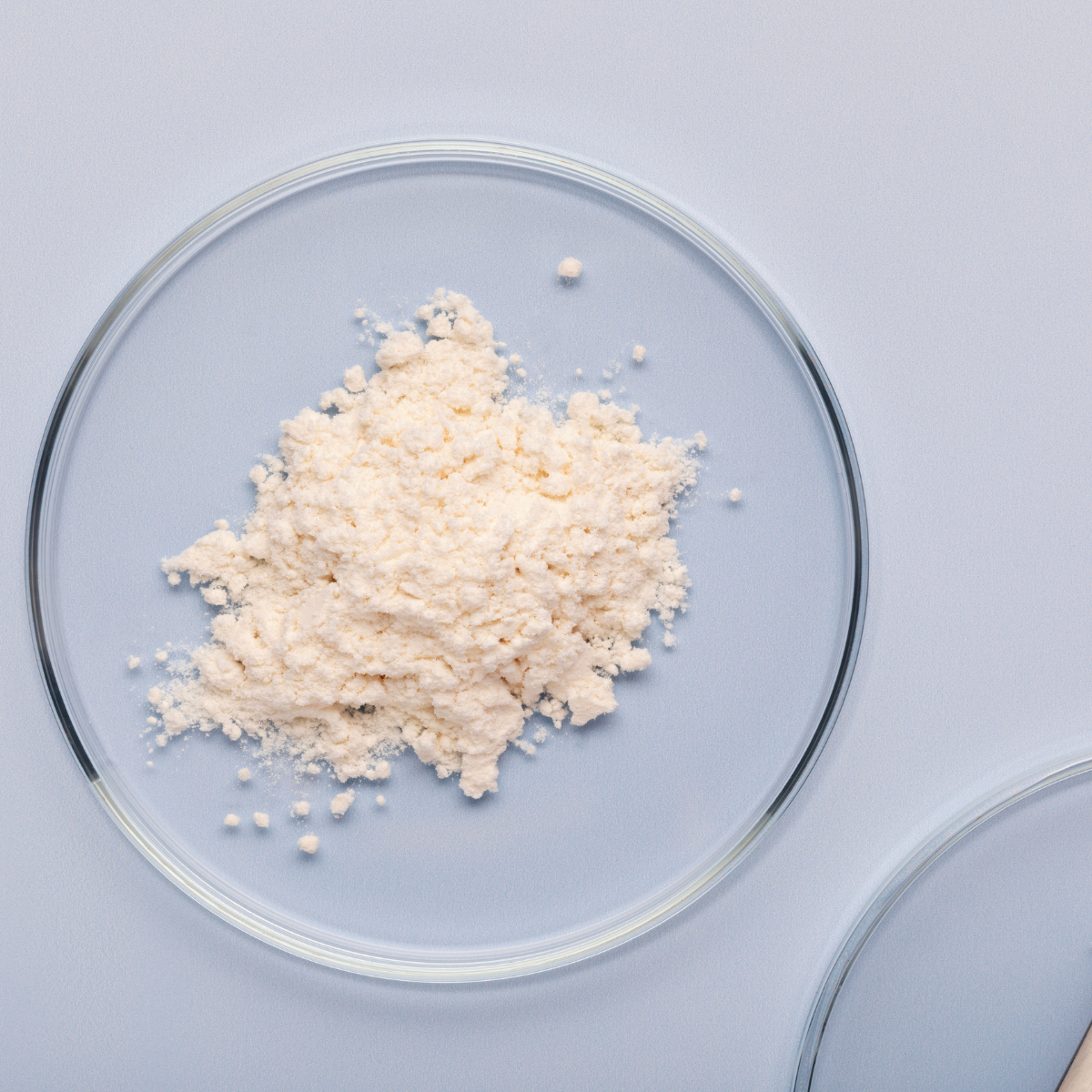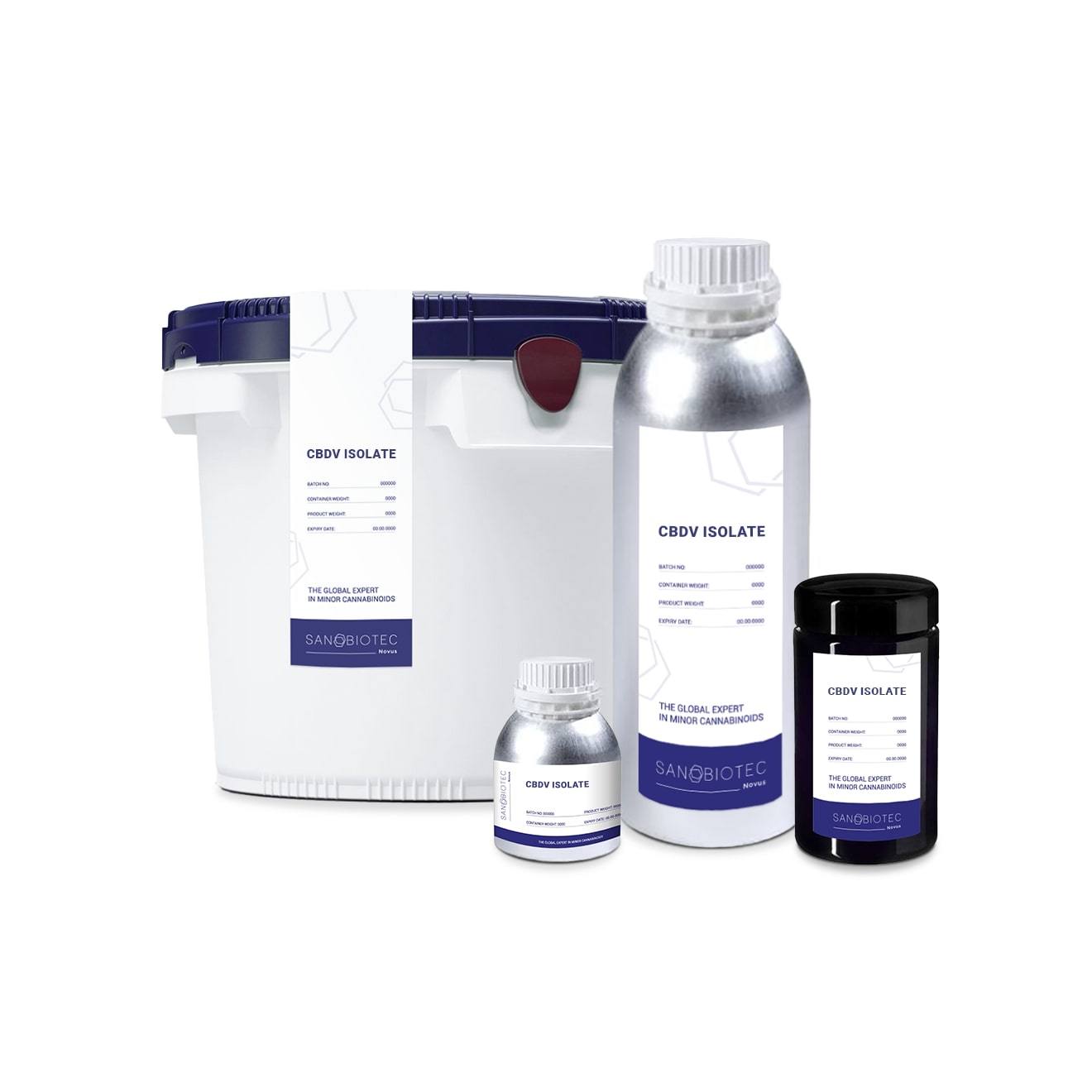Cannabidivarin (CBDV) is one of the minor non-psychoactive cannabinoids found in cannabis plants. This compound is valued for its anti-inflammatory properties and potential effects against epileptic seizures and anxiety. Some CBDV hemp plant strains contain higher levels of this compound, but to get pure CBDV, it has to be synthesized and purified in a controlled environment.
Sanobiotec is a CBDV wholesale producer, shipping all across the world. Our optimal synthesis method helps us consistently manufacture >99% pure CBDV powder, which passes all internal and third-party tests with flying colors. When ordering bulk CBDV through us, you’ll get only the highest-quality, premium cannabinoids.
Try it yourself, use the buttons below to inquire about bulk buying CBDV isolate, order a sample, or book a call to discuss your needs.
CBDV wholesale
At Sanobiotec, we produce the highest quality CBDV isolate powder for personal use, distribution, and production of consumer products. Our CBDV wholesale services are known for their speed and reliability, and customers worldwide appreciate our commitment to exceptional product safety and quality.
You can buy CBDV bulk on our website. We ensure that each CBDV bulk arrives quickly and is fresh from our warehouses in the USA, Japan, or our headquarters in Vilnius, Lithuania.
CBDV isolate certification
When ordering cannabinoids online, whether for private or commercial use, it’s always important to buy from a trusted provider. We test each CBDV batch separately, and your order will arrive with a unique certification as proof that your order is authentic and meets the highest quality standards.
We are proud that Sanobiotec is an ISO 22716:2007 and ISO 9001:2015 certified company.
We run in-house and third-party testing in ISO 17025 Certified 3rd Party Testing Labs to ensure that each batch you order from us meets the highest safety and regulatory standards.
Cannabidivarin (CBDV) benefits
Cannabidivarin (CBDV) is a natural minor cannabinoid that comes from the CBDV hemp plant. Once consumed, CBDV interacts with cannabinoid receptors across the body. It acts as an agonist of TRPA1, TRPV1, and TRPV2 receptors associated with pain and inflammation, leading to potential analgesic effects. Some of the most researched CBDV cannabinoid benefits are:
- Epileptic seizure management for people with Rett syndrome,
- Pain and chronic inflammation reduction,
- Anxiety relief.
What is the difference between CBD and CBDV?
At first glance, CBDV and CBD look almost identical. Having the same molecular carcass, they differ only in the length of the aliphatic side chains (CBDV has a propyl side chain, whereas CBD as a pentyl one) when it comes to CBDV vs. CBD, this difference in structure affects how these compounds interact with the body’s endocannabinoid system.
What are CBDV effects on the body?
Research shows that CBDV has calming and relaxing effects, and may also be helpful in reducing seizures. It can also induce appetite and reduce discomfort from chronic pain.
Where can I buy CBDV isolate near me?
To buy CBDV bulk, contact us, and we’ll find the best deal for you. We’re a CBDV wholesale provider; therefore, by buying it from us, you can expect quick delivery worldwide and the best prices for your favorite cannabinoids.








